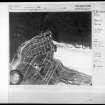Lossiemouth, Branderburgh Harbour
Harbour (Period Unassigned)
Site Name Lossiemouth, Branderburgh Harbour
Classification Harbour (Period Unassigned)
Alternative Name(s) Lossiemouth, New Harbour; Moray Firth; North Sea
Canmore ID 16727
Site Number NJ27SW 17
NGR NJ 23808 71209
NGR Description Centred NJ 23308 71209
Datum OSGB36 - NGR
Permalink http://canmore.org.uk/site/16727
- Council Moray
- Parish Drainie
- Former Region Grampian
- Former District Moray
- Former County Morayshire
NJ27SW 17.00 centred 23308 71209
Harbour [NAT] (at NJ 2390 7119)
OS 1:10,000 map, 1994.
NJ27SW 17.01 NJ 2389 7114 Hand crane
NJ27SW 17.02 NJ 23944 71133 Framed jib-crane
NJ27SW 17.03 NJ 32894 71073 Inner Basin (South Basin)
NJ27SW 17.04 NJ 23742 71230 New Basin (West Basin)
NJ27SW 17.05 NJ 23914 71203 Outer Basin (Stilling Basin)
NJ27SW 17.06 NJ 23974 71151 Beacon (South Pier)
NJ27SW 17.07 NJ 23659 71260 Slipway (New Basin)
NJ27SW 17.08 NJ 23958 71163 to c. 23904 70971 South Pier (Marina Quay)
NJ27SW 17.09 NJ 23809 71230 Pilot Beacon (West Leading Light)
NJ27SW 17.10 NJ 23848 71216 Pilot Beacon (East Leading Light)
Location formerly entered as NJ 2387 7123.
For related warehouses (NJ 2386 7112), see NJ27SW 19.
For (predecessor) Lossiemouth, Lossiemouth Harbour (NJ 236 705), see NJ27SW 18.
For Fisheries Museum at 2 Pitgaveny Street (NJ 23868 71112), see NJ27SW 19.
For Harbour Master's Office at 1 Pitgaveny Street (NJ 23863 71095), see NJ27SW 117.
For warehouses at 3 Pitgaveny Street (NJ 23871 71135), see NJ27SW 118.
For (associated) fish market in Shore Street (at NJ 23729 71201), see NJ27SW 121.
For shipwreck and obstruction close to the harbour entrance, see NJ27SW 8001 and NJ27SW 8002.
(Location cited as NJ 239 712). Branderburgh harbour. Built 1837-9 by engineer James Bremner, and extended S in 1852 and W in 1860. An unusual harbour on an L-plan with long narrow arms. The entrance is at the angle of the L, and there is a classic stilling basin (NJ27SW 17.05) parallel to the northern arm of the L. A prominent feature is a 3-storey, 2- by 11-bay block of gear stores and warehouses, parallel to the S basin. There is a small steel-framed post crane (NJ27SW 17.02) with a wooden jib.
J R Hume 1977
The new harbour, represented today by the modern installations at Branderburgh, comprised of a pair of communicating basins aligned from E to W with a south-going inner basin ending some 250 yds (229m) N of the N end of the old quay. The new basins, which gave a depth of 12 ft (3.7m) at high water springs, were largely quarried out of rock, and the resulting debris was used to build the massive breakwater that protects their seaward (N) side. The N quay and the inner basin were improved and extended shortly before the preparation of the Parliamentary Report, and since the end of the period covered by the present study the port has been modernised and deepened. By 1842 considerable trade seems to have been passing through it, and steamers from Leith and London were making their appearance.
A Graham 1979.
(Location cited as NJ 238 712). Air photographs: AAS/97/12/G27/6 and AAS/97/12/CT.
NMRS, MS/712/29.
Publication Account (2007)
Branderburgh Harbour, Lossiemouth
(Historic Engineering Works no. HEW 2528)
This multi-basin harbour, built on a headland at Lossiemouth at a site sheltered from northerly winds, became the port for the town of Elgin after the former port at the mouth of the Lossie had become inoperable due to silting.
The new facility, designed and constructed in 1837–39 by James Bremner and superintended by Alexander Gibb, comprised a single basin mainly cut in solid rock protected by state-of-the-art seawalls.
After completing the seawalls it proved impracticable to excavate the rock within the basin by traditional techniques and Bremner, who became a notable wreck-raiser, showed his customary ingenuity. He caulked and shored the inside face of the seawalls, closed the 70 ft or 80 ft wide basin
entrance with boom gates and pumped the entire area dry for four months while he excavated the basin floor to 3 ft below low water spring tide.
R Paxton and J Shipway 2007
Reproduced from 'Civil Engineering heritage: Scotland - Highlands and Islands' with kind permission from Thomas Telford Publishers.




















































